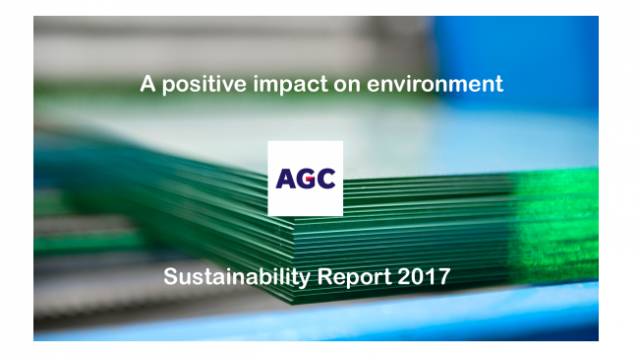AGC Glass Europe is taking its environmental responsibility seriously and turned this responsibility into a challenge
Environment is one of the four shared values of the AGC group and an essential part of the company’s Social Responsibility. AGC Glass Europe is taking its environmental responsibility seriously and turned this responsibility into a challenge.
Environment is one of the four shared values of the AGC group and an essential part of the company’s Social Responsibility. AGC Glass Europe is taking its environmental responsibility seriously and turned this responsibility into a challenge. This challenge is taken on every day by all the sites of AGC Glass Europe and their continuous commitment for the environment results in more sustainable production operations and greener products and services. In the company’s yearly sustainability report, now online on http://www.agc-glass.eu/en/sustainability, AGC communicates on where it stands and how it has improved. It covers the environmental achievements of AGC Glass Europe, operating with two divisions: Building & Industrial Glass Division (including Primary Operations and Processing) and Automotive Division.
Energy production: the total output of photovoltaic installations at AGC sites reached 6697 MWh in 2016.
Air: on a comparable basis, per ton of glass sold, Primary Operations has reduced its direct CO2 emissions with by 11% since 2002. There has been a reduction of around 45% in the specific dust emissions since 1998.
Water: from 1998 to 2016, AGC has managed to reduce water consumption by 71% on a comparable basis.
Solid waste: today, the amount of solid waste produced by the Group is around 230,000 tonnes/year, of which around 98% is further recycled or recovered on site by its suppliers or contractors.
Transport: 72% of all raw materials is transported by ship or train, taking about 54,500 trucks per year off the road. In 2016, about 88,000 tonnes of finished glass products were transported in combined train and truck transport, taking about 4,400 trucks per year off the road.
Packaging: today most of the glass packaging is reusable. AGC Glass Europe achieves a very high level of packaging reuse. In Belgium 98% of the packaging is reused.
Recycling: AGC Glass Europe recycles around 1,000,000 tonnes of cullet per year, saving about 1,150,000 tonnes of raw material and 300,000 tonnes of CO2 emissions.
AGC has developed a holistic approach to fully assess its environmental footprint. Life Cycle Analysis, measurement of carbon footprint and the Cradle to Cradle CertifiedCM program for products are the three ways used to assess its integrated environmental approach.
Cradle to Cradle certification: In 2016, AGC Glass Europe renewed its Cradle to Cradle certifications for float glass, magnetron-coated glass, glossy painted glass, matt painted glass, acid-etched glass, mirrors and laminated glass for two years under the new, more stringent version 3.1 of Cradle to Cradle. In addition, AGC Glass Europe has successfully obtained, as the world’s first and only glassmaker, Cradle to Cradle Certified Bronze for its insulating glass products in January 2017. AGC now offers the broadest portfolio of certified products at Silver and Bronze level.
Carbon footprint: Calculating both savings and emissions leads to a final result of 1:10 (i.e. 34,500,000 tonnes of CO2 vs. 3,400,000 tonnes), meaning that for each tonne of CO2 emitted by AGC Glass Europe activities, nearly 10 tonnes of CO2 are saved thanks to the use of our products. The ratio and – on the basis of the same perimeter – the results have improved since 2009.






